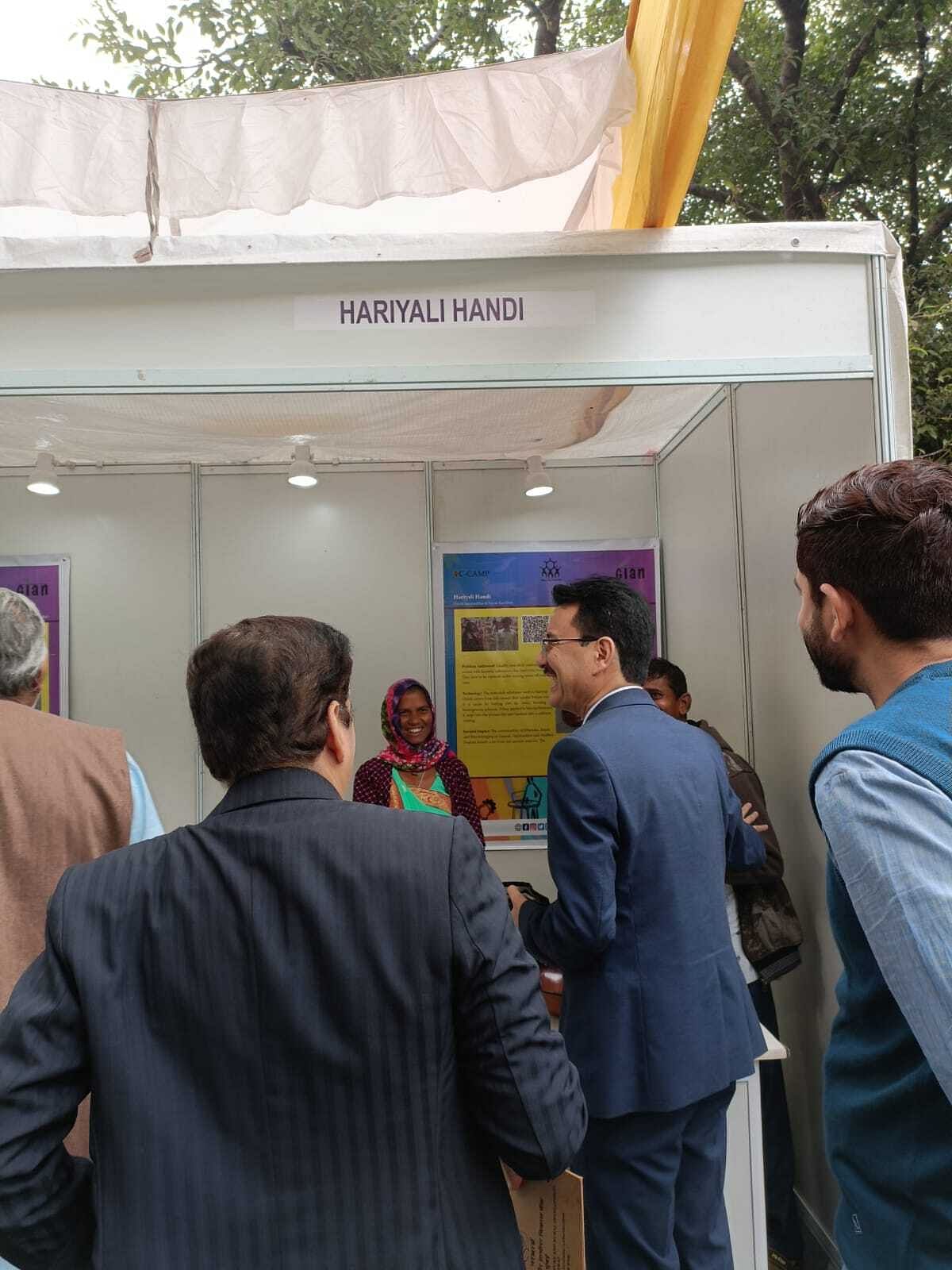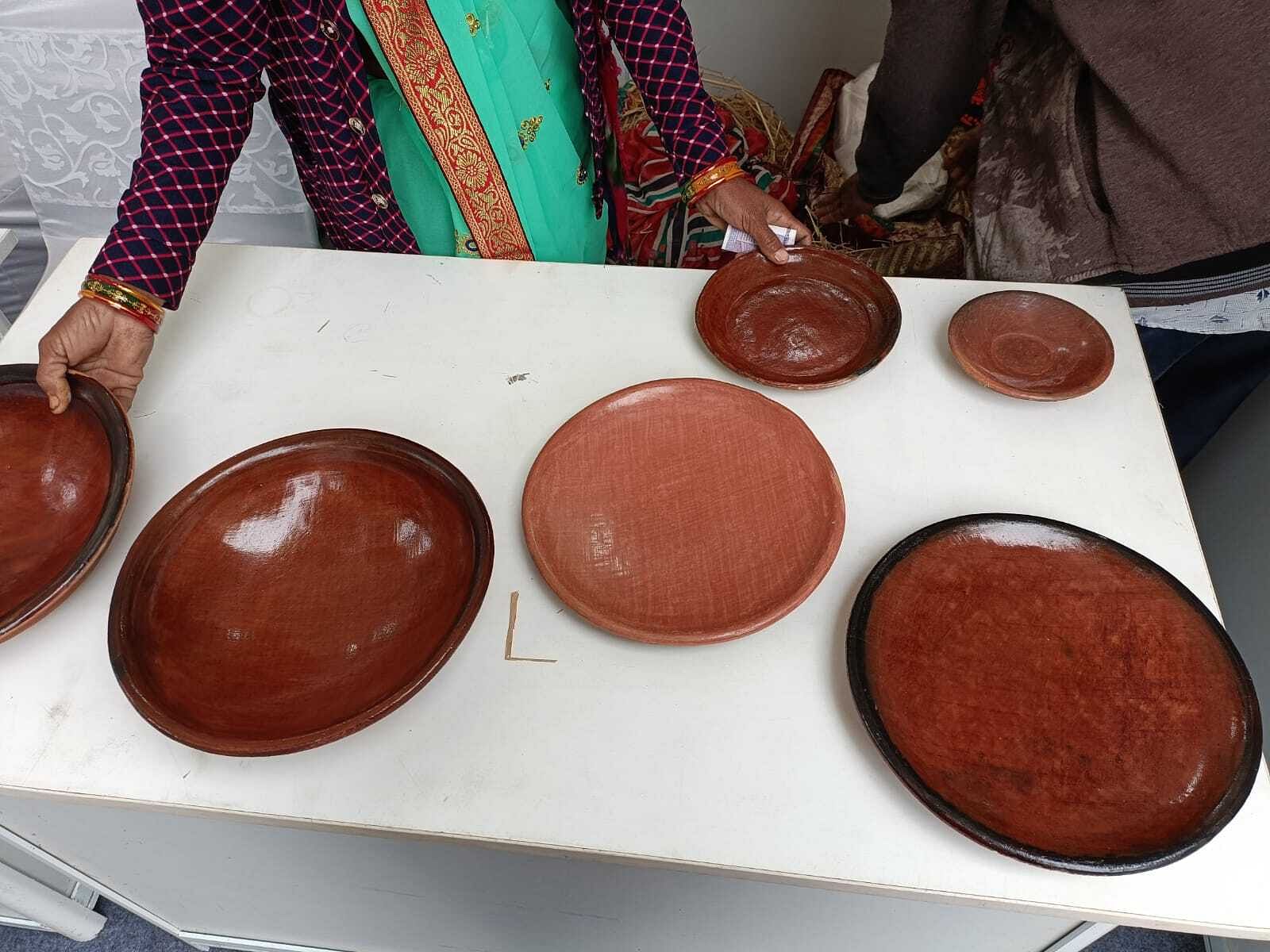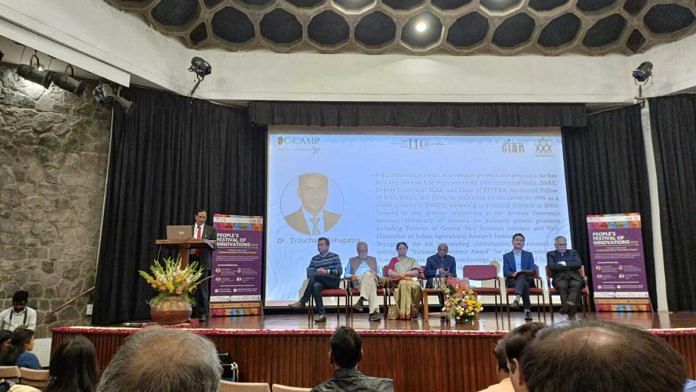New Delhi: When Gujarat’s Suratanbhai was a child, his grandfather taught him to coat earthen vessels with lac—the resin secretion of insects—to make the vessels last longer. As an adult, he and his wife Kavilaben have converted the family innovation into a full-time business. They have travelled to Ahmedabad, Surat, and Vijaynagar to market their eco-friendly products, and sold over 2,000 utensils every year across India since 2009.
Not all discoveries are giant leaps into the future, big ideas or ambitious Chandrayaan and Aditya L-1 missions to the moon and the sun. Sometimes, the innovation revolution can be built on baby steps and small ideas that draw from age-old traditions, fine-tuned over the years. And the People’s Festival of Innovations in New Delhi—held from 28 November to 2 December at the India International Centre (IIC)—embraced both the big and the small.
In its second iteration, the festival saw farmers, beekeepers, and dairy shop owners interact with PhD students, scientists, and entrepreneurs. Organised jointly by the Centre for Cellular and Molecular Platforms (C-CAMP), Gujarat Grassroots Innovation Augmentation Network (GIAN), the non-government Honeybee Network, and the IIC, the five-day festival was a platform for innovators, investors, and inventors.
“There are so many people in the country building something new for the future. Our job is to create a value chain out of it so that while their innovation helps us, we help them too,” said Trilochan Mahapatra, the former director general of the Indian Council of Agricultural Research and the keynote speaker at the inauguration of the event.

Also read: ‘Good girls’ don’t go to Delhi’s Paharganj at night. ‘Go home!’ is what they hear
Need for government push
For Ravi J Deka from Guwahati, the festival was the perfect opportunity to market his alternative to fibre-glass boats. The river boats that people use are still primitive, unsafe and leaky wooden vessels, and fibre-glass boats were unaffordable, he said. But compressed bamboo mat wood—a plywood-like material made of layers of woven bamboo mats pressed together—was an ideal material for reinventing local boats. Deka strengthened and waterproofed the wood, converting them into a bio-composite sandwich and laminating them with multiaxial fibre glass cloth (made of layers of unidirectional glass fibre) and aerospace-grade epoxy.
“Once the British brought railways to India, river water transportation took a back seat while road networks and railways took precedence,” said Deka. As more and more dams were built over rivers, boat transport was killed. At the same time, there was no technological progress to make transportation better.
Local communities in India have huge innovation potential—their ingenious practices are often inexpensive and sustainable too, NABARD general manager
“But small boats are very much part of the local ecosystem in Assam and other north-eastern states,” he added. Deka’s innovation led to a startup called Akvotransiro Tech in 2020, which IIT Guwahati is currently incubating. “Not only is it [Bamboo mat board boat] sustainable, it is very hard and durable. It is lightweight and, because of the woven structure, has a flexibility that makes it impact-resistant,” said Deka.
At the inauguration, exhibition curators Renu Swarup, former secretary to the government of India, Department of Biotechnology, and Anil Gupta, founder of the Honeybee Network, highlighted the importance of how ‘innovation’ needs ‘intervention’ by governments, NGOs, and the private sector.
“Local communities in India have huge innovation potential—their ingenious practices are often inexpensive and sustainable too. What they require is recognition, which we can provide them with,” Goverdhan Rawat, the general manager of NABARD, said in his inaugural speech.
Rawat was referring to people such as Laldingngeti Banitlung, a researcher at the Council of Scientific and Industrial Research (CSIR), Lucknow, who has been studying medicinal plants in her home state of Manipur. Through her studies, Banitlung has developed a product that could treat dandruff—a problem that most modern remedies are unable to solve.
“We extract the essential oils from the Litsea cubeba plant and ethanol from Tithonia diversifolia [Mexican sunflower or Japanese sunflower],” said Banitlung, who is now working with doTERRA, a US-based company focussed on essential oils to commercialise the product.
According to Banitlung, these plants are commonly used in Manipur, but there is very little published research on how they are used.

Also read: No point in going back to Nehruvian secularism—JNU prof Nivedita Menon
Sustainable innovation
In another stall at the event, innovator and apiculturist Lamuni N Sangma from Chichotcheng village in Meghalaya was talking about her beekeeping solutions. She found that traditional wooden artificial beehives used by farmers in her village were not good at retaining bee populations. Bees tend to abandon wooden beehives faster.
So, she made a clay beehive—an innovation that is sustainable and produces better quality honey. According to Sangma, clay beehives can retain bees for longer—the insects don’t abandon them as often as wooden beehives.
Sangma now not only owns 30 mud beehives but is sharing her method with others in the village as well. Supported by the Meghalaya Community Led Landscape Management Project (MCLLMP), she has even designed portable beehives and is conducting honey testing at her farm.
Unlike Suratanbhai, who has already scaled up production of his lac-coated utensils, or Deka, who has formed his startup, Sangma is yet to chart out her entrepreneurial journey. The innovation festival is her opportunity to take the first steps in this direction.
Such exhibitions and festivals are necessary to facilitate innovation. “If even five people benefit from this event, we would consider this event a success,” said Swarup in her address.
(Edited by Ratan Priya)



